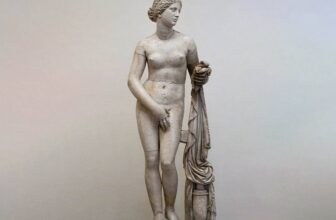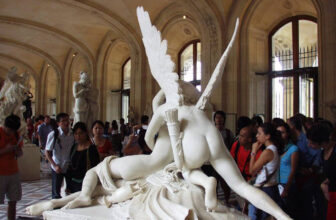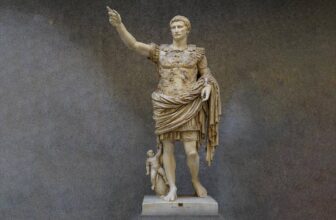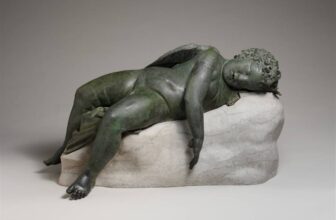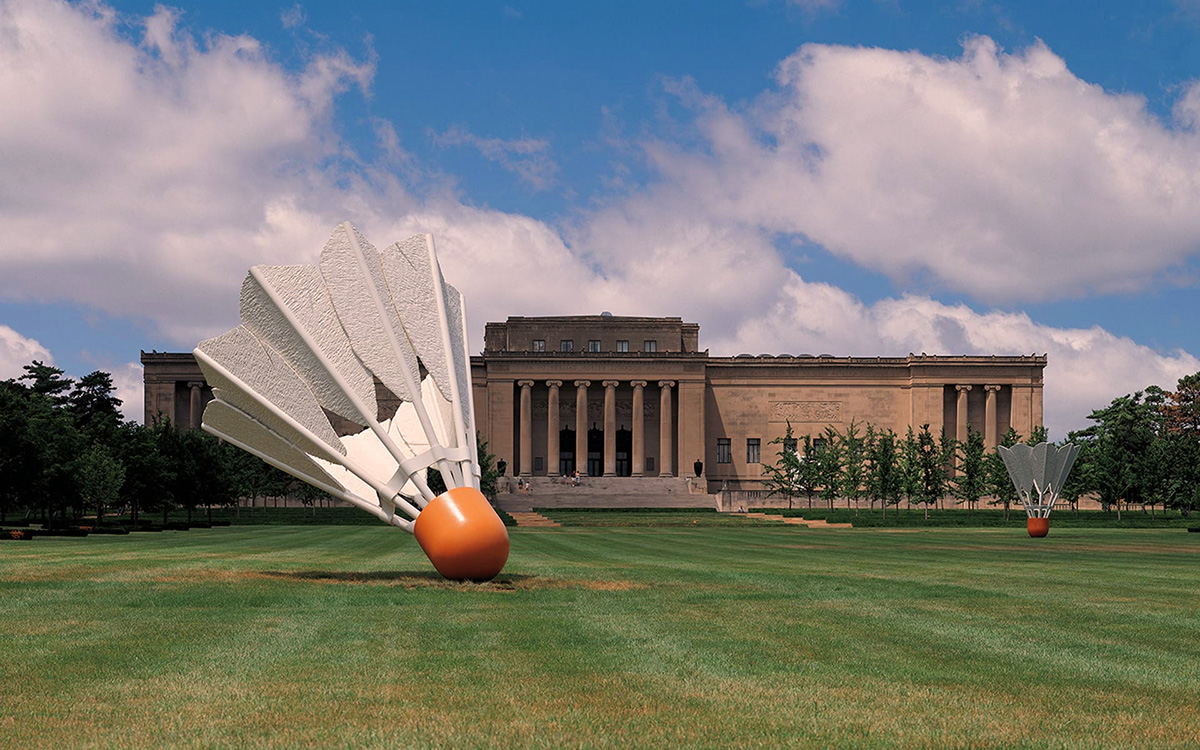
What is Claes Oldenburg Known For
In the world of contemporary sculpture, few artists have left a mark as bold, whimsical, and massive as Claes Oldenburg. His artworks tower in public spaces, turn the ordinary into the monumental, and challenge viewers to look again at the objects we take for granted. A soft hamburger. A colossal clothespin. A towering typewriter eraser. These are not just objects from daily life, they are works of art that question, parody, and celebrate consumer culture.
Claes Oldenburg, born in 1929 in Stockholm, Sweden, and raised in Chicago, spent much of his life turning the mundane into the magnificent. From humble beginnings as a painter and performance artist in 1950s New York, he became one of the most innovative sculptors of the 20th century. With works ranging from soft fabric sculptures to colossal public installations, Oldenburg’s playful yet thought-provoking pieces helped define Pop Art and transformed the landscape of modern sculpture.
Claes Oldenburg is best known for creating large-scale public sculptures of everyday objects, often rendered in soft materials or exaggerated proportions. His works blur the boundaries between art and life, inviting viewers to reconsider the objects that surround them daily.
Oldenburg’s early contributions to the Pop Art movement in the 1960s made him a household name. Pop Art was known for its use of imagery from advertising, comic books, and mass-produced goods, and Oldenburg’s work captured this essence perfectly. But unlike his contemporaries, Andy Warhol, Roy Lichtenstein, and James Rosenquist, who focused on two-dimensional prints and paintings, Oldenburg brought Pop into the third dimension.
His art often contains a rich layer of irony. A giant ice cream cone crashing into the corner of a building, a three-story high shuttlecock on a manicured lawn, or a soft vinyl toilet, all reflect not only humor but a subtle critique of American consumerism and the absurdity of modern life.
How Did Claes Oldenburg Make His Art Sculptures?
Oldenburg’s process was both imaginative and technically innovative. He began his career with “soft sculptures”, objects like burgers, toilets, and light switches rendered in pliable materials such as vinyl, canvas, and foam. These sculptures lacked the rigidity of traditional sculpture, giving them a droopy, lifelike quality. By softening solid objects, Oldenburg disrupted expectations and created a surreal commentary on form and function.
Later, when he transitioned into large-scale public works, he collaborated with his wife and artistic partner Coosje van Bruggen, a Dutch-born art historian and sculptor. Together, they planned and executed dozens of monumental projects around the world. Coosje helped refine Oldenburg’s vision and added a conceptual depth to the projects.
The process typically started with sketches and small-scale models. Then came engineering and fabrication, often involving a team of architects, engineers, and industrial fabricators. The materials ranged from steel and aluminum to fiberglass and concrete, chosen for durability and scale. In these works, the couple brought fantastical ideas into the realm of structural reality.
Oldenburg once said, “I am for an art that is political-erotical-mystical, that does something other than sit on its ass in a museum.” That spirit, anti-elitist, humorous, critical, and curious, runs through all of his work.
What Is Claes Oldenburg’s Most Famous Sculpture?
While Oldenburg produced dozens of iconic sculptures, several works stand out as emblematic of his artistic legacy. Perhaps the most famous is the “Clothespin” (1976) in Philadelphia. This 45-foot-tall black steel sculpture looks like a giant version of the common household item. Located across from Philadelphia’s City Hall, it has become a landmark in its own right.
“Clothespin” cleverly mimics the form of Constantin Brancusi’s “The Kiss”, suggesting a romantic embrace while maintaining the mundanity of the object. It’s at once humorous, monumental, and deeply considered, a perfect example of Oldenburg’s ability to elevate the everyday.
Other top contenders for his most famous sculpture include:
“Spoonbridge and Cherry” (1985–1988) in the Minneapolis Sculpture Garden. A massive spoon arches over a pond, with a cherry delicately balanced on top. The cherry doubles as a fountain, and the piece has become one of the most beloved public artworks in the U.S.
“Dropped Cone” (2001) in Cologne, Germany. An enormous ice cream cone appears to have crashed into the corner of a shopping mall roof, melting down its sides. The piece plays with location, humor, and surrealism in classic Oldenburg fashion.
“Shuttlecocks” (1994) at the Nelson-Atkins Museum of Art in Kansas City, Missouri. These 18-foot badminton shuttlecocks lie scattered across the museum lawn, transforming the space into a playful playground.
Each of these works distills Oldenburg’s core themes: humor, scale, transformation, and a reinterpretation of the banal.
How Much Are Claes Oldenburg’s Art Sculptures Worth?
Claes Oldenburg’s artworks are highly valued, both for their cultural significance and their rarity. Prices vary dramatically depending on the size, material, and provenance of the piece.
Small sculptures and multiples (such as soft vinyl pieces or maquettes) can range from $20,000 to over $500,000 at auction.
Large-scale public sculptures, especially those created in collaboration with Coosje van Bruggen, are often commissioned for millions of dollars. While they rarely appear on the private market, estimates for pieces like “Spoonbridge and Cherry” or “Clothespin” are well into the multi-million-dollar range based on fabrication costs and artistic prestige.
One of Oldenburg’s early “soft sculptures” titled “Soft Drainpipe, Red Version” sold at Sotheby’s for $4.1 million in 2008.
Oldenburg’s work is represented in major museum collections around the world, and any authenticated sculpture commands a high price due to its historical and cultural importance.
Collectors and institutions alike prize his pieces for their unique blend of humor and intellect. And with his passing in 2022, the market has seen increased interest in acquiring his works.
Where Are Claes Oldenburg’s Art Sculptures Located?
Oldenburg’s legacy is global. His sculptures are found in parks, city centers, museum gardens, and private collections across continents. Here are some notable locations:
United States:
Philadelphia, PA – “Clothespin” (1976) at Centre Square Plaza
Minneapolis, MN – “Spoonbridge and Cherry” at the Walker Art Center’s Sculpture Garden
Kansas City, MO – “Shuttlecocks” at the Nelson-Atkins Museum of Art
Los Angeles, CA – “Toppling Ladder with Spilling Paint” at the Los Angeles County Museum of Art (LACMA)
Chicago, IL – “Batcolumn” (1977), a 101-foot sculpture resembling a baseball bat
Cleveland, OH – “Free Stamp” (1991) in Willard Park
Europe:
Cologne, Germany – “Dropped Cone” atop the Neumarkt Galerie
Rotterdam, Netherlands – “Screwarch” (1984), a monumental stainless steel screw standing upright
Paris, France – Smaller works in the collections of the Centre Pompidou and other modern art institutions
Asia and Beyond:
While fewer large-scale works exist in Asia, Oldenburg’s influence extends globally. Smaller sculptures and prints are held in major museums and private collections in Japan, South Korea, and the Middle East.
His art has also been included in exhibitions and retrospectives at institutions such as:
The Museum of Modern Art (MoMA) in New York
The Whitney Museum of American Art
The Guggenheim Museum
The Tate Modern in London
Claes Oldenburg’s Influence and Legacy
Claes Oldenburg didn’t just make art, he changed the way we see the world. His sculptures invite us to question function, size, and significance. A giant eraser is no longer just an office supply, it becomes a playful commentary on memory and erasure. A giant spoon becomes both a tool and a surreal landscape.
He challenged the elitism of the art world by drawing from the world of consumer goods, advertising, and everyday objects. His humor was never mean-spirited; rather, it was disarming, allowing broader audiences to engage with contemporary art.
His collaboration with Coosje van Bruggen added a layer of conceptual sophistication to his work. Their partnership was not just creative, it was foundational to some of the greatest works of public art ever made.
Claes Oldenburg’s sculptures remind us that art is not confined to galleries or pedestals. It can crash onto rooftops, sprawl across gardens, or tower over busy intersections. It can be soft, funny, oversized, and strange, and still be profound.
He took the familiar and made it unfamiliar. He made us laugh, wonder, and reconsider. And in doing so, he transformed not only sculpture but the spaces we inhabit.
Oldenburg once said, “The most beautiful thing in Tokyo is McDonald’s. The most beautiful thing in Stockholm is McDonald’s. The most beautiful thing in Florence is McDonald’s.” Whether he meant it as satire, critique, or celebration, it reflects his unique ability to blend the popular with the profound.
From droopy burgers to towering clothespins, Claes Oldenburg’s work continues to stand tall, physically and artistically. His art is a reminder that there is beauty in the ordinary, and sometimes, a hamburger can be as thought-provoking as a marble statue. image/Photo: Attilio Maranzano; Courtesy the Oldenburg van Bruggen Studio
